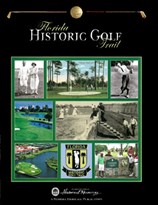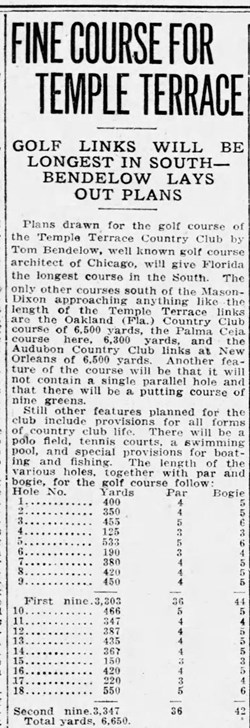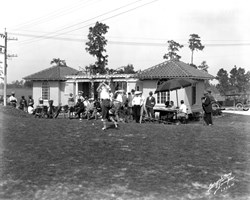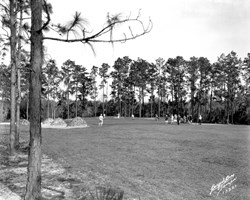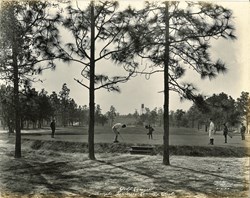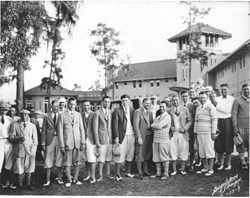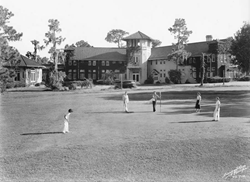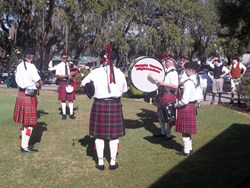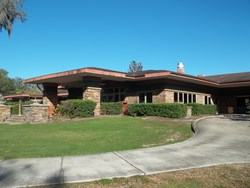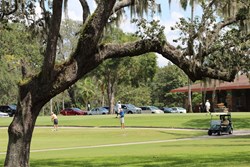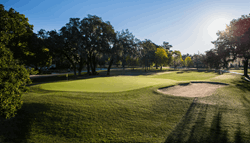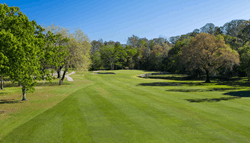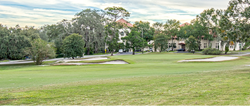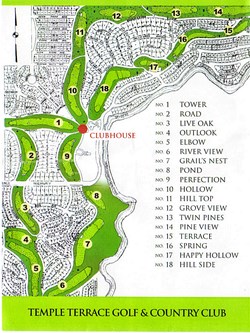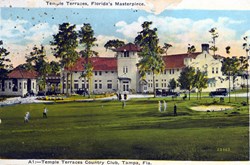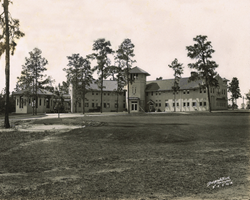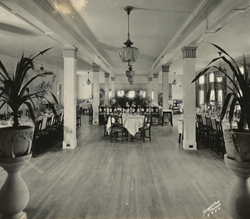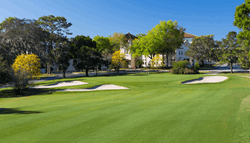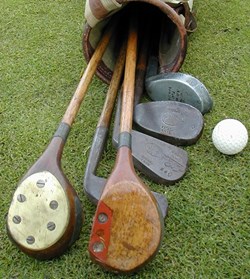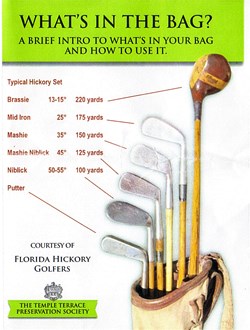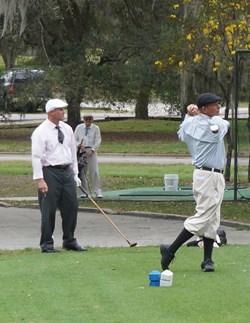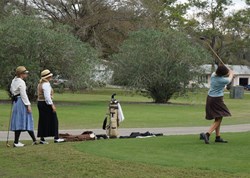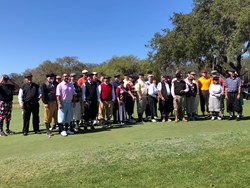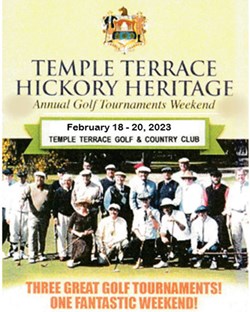Featured Golf Course
In this section learn more about the history of the course and its hometown, see a selection of historic and current images of the course, learn about what the course is like today, and discover nearby historic sites.
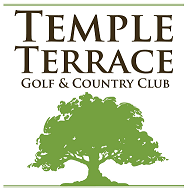
Temple Terrace Golf & Country Club
History
Temple Terrace Golf and Country Club is located in the City of Temple Terrace in Hillsborough County.
The history of Temple Terrace Golf Course has been physically and culturally interwoven with the City’s history since the early 1920s. The golf course was an integral part of the original plat of the development of Temple Terrace. With a rolling terrain along the Hillsborough River, and land cleared by timbering, the golf course was a key part of the developer’s marketing plan of an exotic resort community that was exclusive yet accessible.
Early promotional literature for Temple Terrace Estates prominently featured the golf course, stating, “The eighteen hole Temple Terraces golf course, destined to be one of the finest in the South, was built for the pleasure of the Club members and their guests, and when you buy a grove you automatically become a life member of the club.”
The developers hired one of the world’s most prolific early golf course designers, Scottish born Tom Bendelow, who was a pioneer in the establishment and growth of the game in America. In a career that spanned little more than 35 years, he is credited with laying out hundreds of golf courses across the United States and Canada. Bendelow is perhaps best known for his layouts at Medinah Country Club in Chicago and for Olympia Fields Country Club in Olympia Fields, Illinois.
In 1921, Bendelow arrived from Chicago to look over the Temple Terrace property. He was very much impressed with the beautiful, natural location for a golf course. Work began on the course later that year and the first nine holes were open for play in 1922. The following year, the 18-hole golf course was completed and officially opened. At over 6,600 yards it would be one of the longest golf courses in Florida at that time.
The course is laid out in a “returning nines” design. The idea of returning nines – where a course has two loops of nine holes, each beginning and ending at the clubhouse – dates to the early nineteenth century, and has become a standard approach for golf course design. A returning nines course allows for greater flexibility in the number of rounds played each day, as there can be two starting points, or golfers have the option of playing just nine holes. A single fairway course (as opposed to a course where the fairways parallel each other) uses more land acreage than other types, but creates more space for house lots overlooking the course, as is the case at Temple Terrace.
In 1925, Temple Terrace Golf and Country Club was the site of the first ever Florida Open which was billed as the "Greatest Field Of Golfers Ever To Play In Florida.” The $5,000 in prize money was the richest golf tournament ever held in Florida at the time. The 72 hole, two day tournament was played at Temple Terrace on the first day play (36 holes) and at Palm Ceia Country Club in Tampa for the second day. Over 80 golfers entered the tournament including International golf stars. Temple Terrace’s golf professional Jim Banes lead by 3 shots after the first day’s play of 36 holes. But it was Leo Diegel of Hollywood, Florida, who won the tournament with Barns finishing two shots behind in second place.
When Bullard Parkway (originally Temple Terrace Highway) was widened beginning in 1999, tunnels were added under the roadway for use by golf carts and pedestrians. In 2012, the Temple Terrace golf course became the second Florida golf course listed in the National Register of Historic Places.
Today
The Temple Terrace Golf and Country Club includes an 18-hole, par-72 golf course featuring four sets of tees playing from 5,400 to 6,400 yards. Winding through the historic Temple Terrace Estates community, the original routing follows the natural contours of the land.
While some courses have adjusted to improvements in club and ball technology by making holes considerably longer, the Temple Terrace Golf Course continues to challenge players with its narrow fairways and small greens, while retaining original yardages. The result is a playable course that rewards the skilled golfer.
Local Knowledge
Located behind the 18th green sits the original 1922 clubhouse for the Temple Terrace Country Club. This Mediterranean Revival style clubhouse was designed by prominent Tampa architect M. Leo Elliot as the centerpiece of the golf course community. An elegant entrance featured a glass and wrought iron awning with marble steps and vestibule.
The clubhouse became a popular social center for Tampa. In 1944, the clubhouse was sold to Florida College and is currently being used as a residence hall for students. The building acquired the name Sutton Hall in honor of Mr. and Mrs. W.H. Sutton.
Inside the Leather
Play Hickory Golf - Temple Terrace is home to several hickory golf tournaments including the Temple Terrace Hickory Hacker, the Temple Terrace Centennial Challenge and the United States Professional Hickory Golf Championship, which is played annually in February. In these golf tournaments the participants play with pre-1930 wood shafted golf clubs or replicas of the same along with reproduction balls of the era. The Temple Terrace course provides a historically accurate setting for competitors to play exactly like the early pros who started it all.
A group in the area known as the Florida Hickory Golfers are dedicated to preserving the pureness and authenticity of the game of golf when it was in its humble beginnings. Florida Hickory Golfers play with authentic hickory shafted golf clubs and host a series of outings each year at nearby golf courses and welcome others to join in. Visit Florida Hickory Golfers
Visit - Contact
Temple Terrace Golf & Country Club
200 Inverness Avenue
Temple Terrace, Florida 33617
200 Inverness Avenue
Temple Terrace, Florida 33617
View the Website
Phone:
813.988.1791
